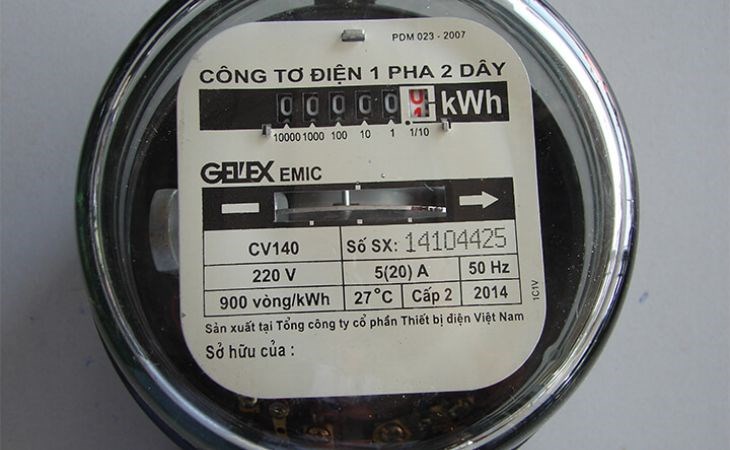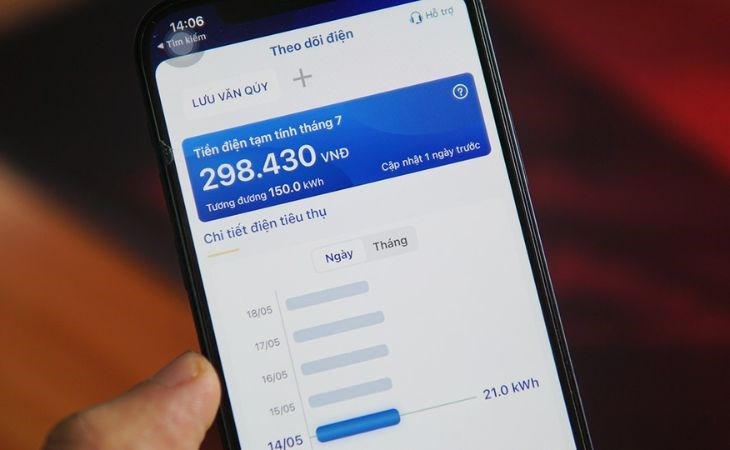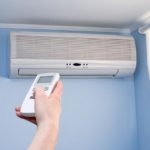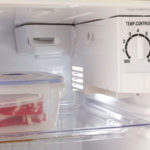1 Understanding Your Electric Meter’s Parameters
| Parameter | Meaning |
| 220V | The standard voltage for an electric meter. |
| 10(40)A |
|
| 450 rev/kWh | To obtain 1kWh, the meter disk must turn 450 revolutions. This also applies to 900 rev/kWh and 225 rev/kWh. |
| Class 2 | Has a 2% error margin across the entire measurement range. This is considered the most accurate class. Generally, the smaller the class, the higher the accuracy. |
| 50Hz | The frequency of the electrical grid. |
These parameters help us understand our monthly electricity costs and allow us to optimize our energy usage. They also enable us to regularly check our electrical current to ensure our home’s electrical system is stable and leak-free.

Parameters help us understand our monthly electricity costs.
2 Guide to Reading Your Electric Meter Accurately
How to Read a Single-Phase Electric Meter
Single-phase electric meters are commonly used and familiar to many. Here’s a basic guide to understanding and reading a single-phase electric meter:
Typically, a single-phase electric meter will have six digits, with the first five digits in black indicating the amount of electricity consumed. The last digit, in red, represents the decimal place. Together, these five black digits give us a value from 00000 to 99999 kWh, which is the number before the decimal point.

How to read a single-phase electric meter
Three-Phase Electric Meter (Direct)
A three-phase electric meter in electronics includes six digits that measure total energy consumption. This energy is used during three different time periods: regular hours (T1), peak hours (T2), and off-peak hours with low electricity demand (T3). The energy consumption for T2 and T3 will be displayed on the screen. T1 can be calculated by subtracting T2 and T3 from the total.
Typically, a direct three-phase electric meter includes ratings like 10(20)A, 20(40)A, 30(60)A, and 50(100)A. When reading a 10(20)A meter, the first five digits in black represent the kWh value, and the last red digit represents 0.1kWh. Other parameters are read similarly.

How to read a three-phase electric meter (direct)
Three-Phase Electric Meter (Indirect)
An indirect three-phase electric meter has a standard rating of 5A and includes indirect measurement symbols. The meter reading consists of six digits, with the first five black digits representing 1kWh and the last red digit representing 0.1kWh.
However, this is just the meter reading. To calculate the actual electricity consumption, you need to multiply it by the current transformer and measurement transformer ratios. Typically, in low-voltage networks, only current transformers are used for measurement.
So, if the meter reading is 345678 and the current transformer ratio is 100/5A = 20, the actual electricity consumption is: 34,567.8 x 20 = 691,356kWh.

Three-phase electric meter (indirect)
3 Easy Guide to Calculating Your Electricity Bill
To calculate your electricity bill based on kWh, kW, and W, we can use the following conventions and formulas:
The formula for calculating your electricity bill based on kWh used in a month is:
Next, multiply the calculated kWh by the retail price and add VAT to get the total amount payable. Here are the price references for the different tiers:
- Tier 1 (0 to 50 kWh): 1,484 VND
- Tier 2 (51 to 100 kWh): 1,533 VND
- Tier 3 (101 to 200 kWh): 1,786 VND
- Tier 4 (201 to 300 kWh): 2,242 VND
- Tier 5 (301 to 400 kWh): 2,503 VND
- Tier 6 (401 kWh and above): 2,587 VND
Note: The above prices are for reference only and may change over time based on the actual prices set by the electricity company.

How to calculate your electricity bill based on kWh, kW, and W
4 Tips to Save Electricity Effectively
- Use LED lights: Replace traditional incandescent bulbs with LED lights. LED lights use less energy and last up to three times longer than incandescent bulbs.
- Turn off unused appliances: Make sure to turn off lights, fans, TVs, computers, and other electrical appliances when not in use. They still consume energy in standby mode.
- Use energy-saving modes: If available, enable energy-saving modes on appliances like washing machines, dryers, refrigerators, air conditioners, and computers.
- Utilize solar energy: If possible, install a solar energy system to take advantage of sunlight and reduce reliance on the electrical grid.

Energy-saving mode on Aqua Inverter 9.5 kg AQD-A952J BK Washing Machine




































